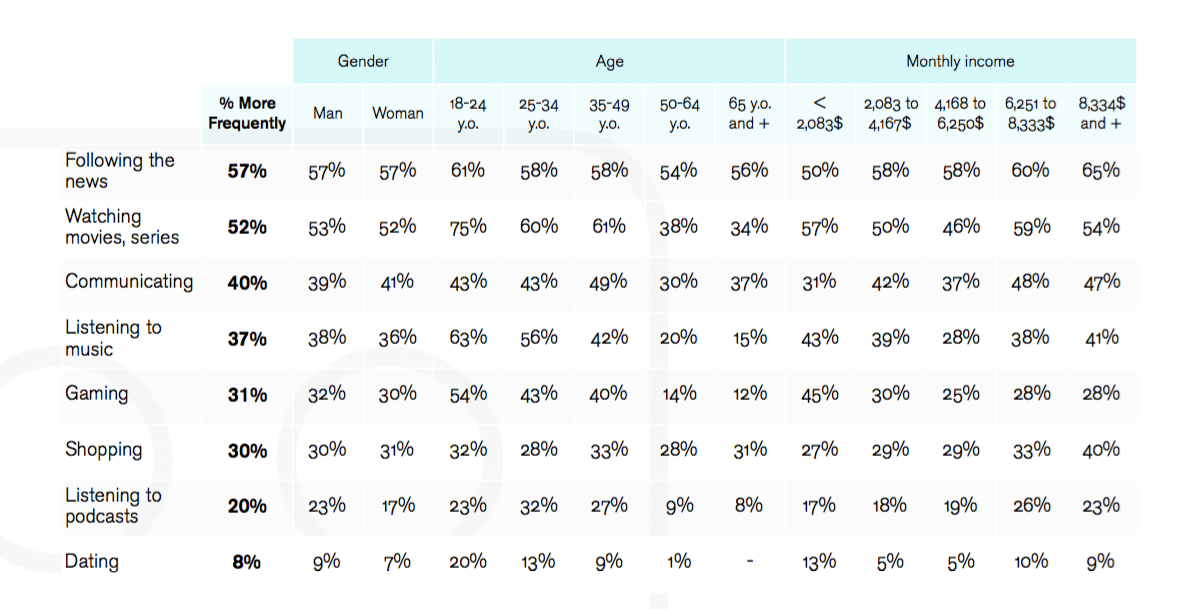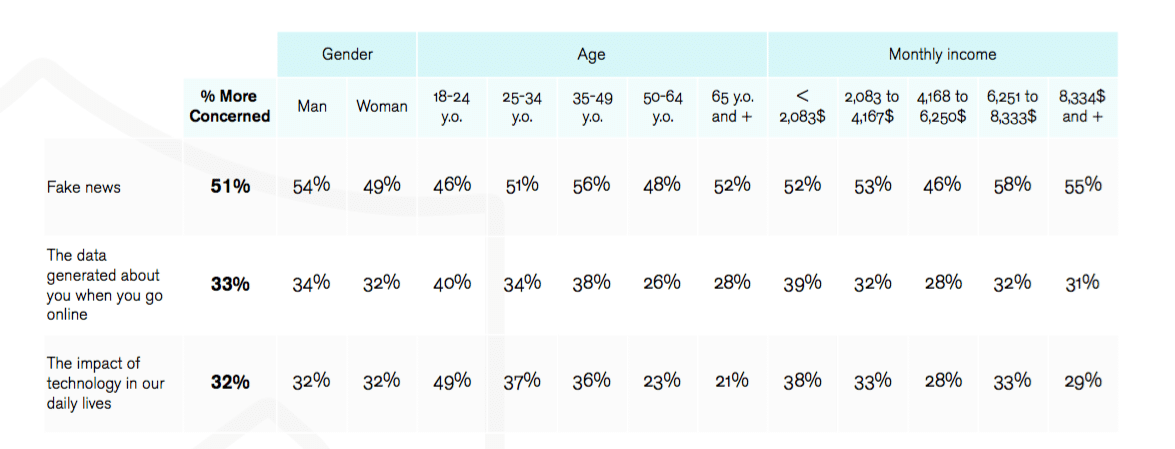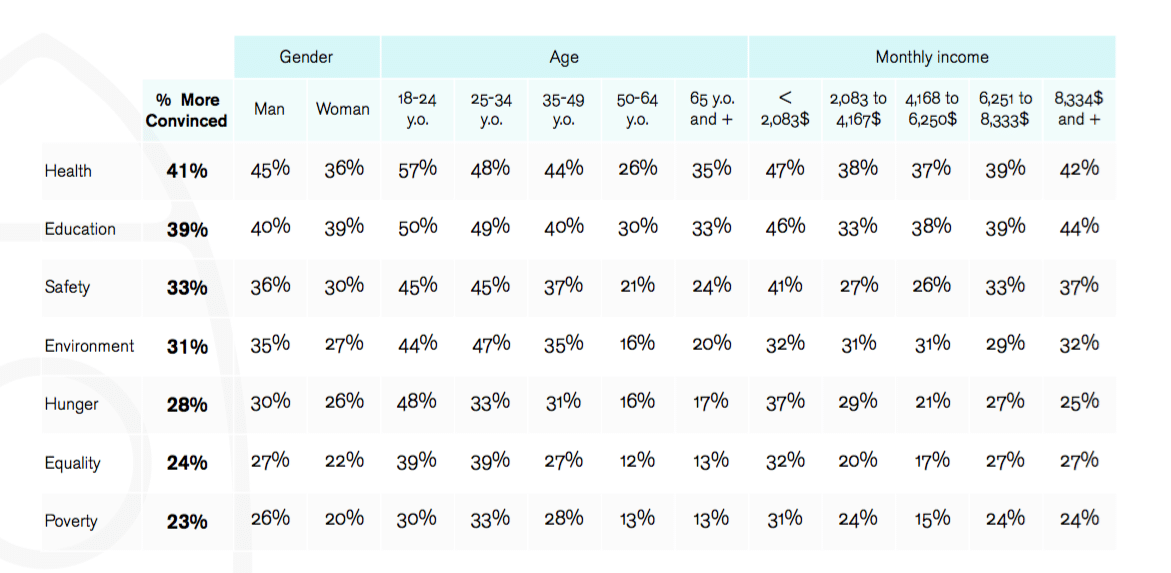As most people around the world have spent the last several weeks sheltering at home, they’ve become increasingly reliant on technology and media to keep up with what’s going on in the world. But of course not everyone has the luxury of easy access to these essentials—indeed, new research from digital agency JIN into behaviors and attitudes during the COVID crisis reveals that media and tech may actually be broadening the gap between high- and low-income Americans, and increasing low-income Americans’ vulnerability to the virus.
Data from the new survey, conducted by French research company OpinionWay, shows that the lower an American’s monthly income is, the less likely they are to spend time using technology to achieve fundamental needs. According to the 1,000 Americans polled, the higher a person’s monthly income, the more likely they are to spend time using the Internet to do the following during the crisis:
- Follow the news: 65 percent for the highest income bracket vs 50 percent for the lowest
- Communicate: 47 percent vs 31 percent
- Shop: 40 percent vs 27 percent
The lowest income brackets are often essential workers who have less time to seek out health and safety information and communicate with friends and family, two essential ways to learn how to protect oneself and avoid contamination.
The lack of communication and information could be one of the factors that explains why people with lower income are hit harder by COVID-19, on top of other factors such as lack of access to quality healthcare. This reveals what could be considered as a “digital bias” that benefits those of higher socioeconomic status and hinders those of lower status.
Generations divided on tech
While an overall increase in technology use across generations has resulted during the crisis, Millennials and Gen Z are planning to continue with their digital usage much more than older generations like Boomers.
For example, 32 percent of 25-34-year-olds polled have created an online shopping account during confinement they plan to continue using, while only 8 percent of 50-64-year-olds said the same.
The exception is for videoconferencing, which older generations have embraced more than other tech. Nineteen percent of respondents ages 50-64 created an account on a videoconferencing platform they plan to continue using, while even more respondents age 65 and above did the same (22 percent).
Lack of communication and access to media news could explain why the poorest are most hit by COVID-19:
Gender division on internet security
The survey also showed that when it comes to how comfortable and secure Americans feel using the Internet (considering issues like privacy and fraud), there is a notable gender divide. In the Millennial and Gen Z demographics, men are largely more comfortable than women using the Internet—59 percent of men under 35 said they feel a lot more comfortable and secure using the Internet since the start of the epidemic, while only 39percentof women under 35 said the same.
Interestingly, 41 percent of Americans overall feel more secure online since the start of the pandemic—this means they are the least concerned about privacy issues overall compared to those in the other countries that participated in the same survey (Germany, France and the United Kingdom).
Americans’ increased use of the Internet during the pandemic leads to growing concerns about technology:
Additional findings
Other insights include that Americans are particularly happy with Amazon and Walmart—when participants were asked to open-endedly name one brand or company that has stood out as having done something especially well during the crisis, 6percentsaid Amazon and 6percentsaid Walmart. These were the two most specified brands.
Additionally, there has been a nearly equal increase between online shopping for men and women. 30 percent of men said they have been doing more online shopping because of the crisis while a similar 31 percent of women said the same.
Young and poor Americans believe in technology to help solve problems—Boomers don’t:









